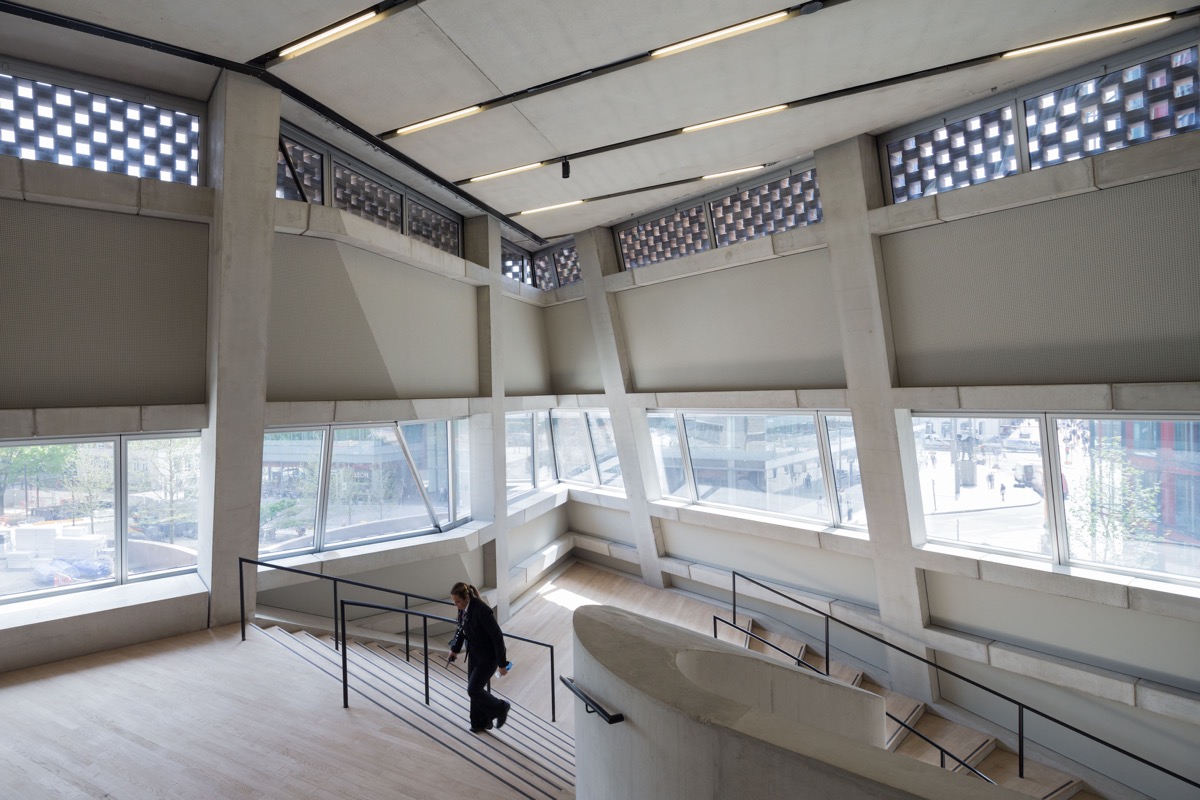The right to look is not about seeing. It begins at a personal level with the look into someone else’s eyes to express friendship, solidarity, or love. That look must be mutual, each person inventing the other, or it fails … It is the claim to a subjectivity that has the autonomy to arrange the relations of the visible and the sayable. The right to look confronts the police who say to us, ‘Move on, there’s nothing to see here.’ Only there is, and we know it and so do they.1
Winchester School of Art became an Associate of Tate Exchange in 2017 and staged its first main event, Building an Art Biennale, in May 2018. The second, Itinerant Objects, took place in April 2019. A podcast project, Nothing to See Here, was due to be the School’s third project. It was being developed in response to Tate Exchange’s annual theme of power for 2020, but was one of many events cancelled due to the COVID-19 pandemic. In lieu of this project an dialogue was held between Nicholas Mirzoeff (who has been a scheduled guest) and Sunil Manghani, and is posted as a ‘Research Feature’ on the Tate website.
Tate Exchange at Tate Modern opened in 2016 and describes itself as an open experiment exploring the role of art in society. It offers a unique platform that combines curation, education and social participation. In doing so, it brings together the work of international artists, members of the public and contributions from over sixty ‘Associates’ who represent an array of organisations, large and small, from diverse fields within and beyond the arts, including education, youth engagement, health and wellbeing, and community advocacy. Crucially, Tate Exchange has afforded its Associates a great deal of freedom to devise and curate their own contributions for an annual themed programme, allowing for an entire floor of Tate Modern’s new building to be dedicated to participatory artworks, workshops, activities and debates.
As a collaboration between two Associates, Winchester School of Art and Stance Podcast, the project, Nothing to See Here, had sought to foster social proximity with three other Tate Exchange Associates – Valleys Kids, People Empowering People, and John Hansard Gallery – each of which work in highly creative ways, deep within local communities (way outside of the ‘art world’ bubble), often working through very live issues of social and economic hardships. Everyone involved was due to join together to produce a podcast series, which would explore the value of art and creativity as it actually takes places within the local circumstances of the collaborating Associates. The series was to be launched at a special event at Tate Modern at which the audio would provide an invisible soundscape across the entire floor of Tate Exchange, which would otherwise be completely ‘empty’ (‘nothing to see there’). A dedicated forum had been planned, inviting the collaborating Associates and their communities, guest speakers and members of the public, to engage in critical dialogue about the ‘values’ of art and creativity, about the voices that are allowed to be heard, and the right for us to look.
One such guest speaker was Nicholas Mirzoeff, Professor of Media, Culture and Communication at New York University, and author and editor of key texts on visual culture, including An Introduction to Visual Culture (1999), Diaspora and Visual Culture: Representing Africans and Jews (2000), Watching Babylon: The War in Iraq and Global Visual Culture (2005), The Right to Look: A Counter-History of Visuality (2011) and How to See the World (2015). Mirzoeff had been a key inspiration for the project concept, not least due to his use of the phrase ‘nothing to see here’. As it turned out, however, there really was going to be nothing to see.
The COVID-19 health crisis swept across the globe just as the project was finding its footing; just as the collaborators were working out when and where they could meet, among their other pressing activities and duties. There was a great deal of good will, excitement and anticipation for what this ‘open brief’ project was going to bring. Yet, as country after country went into lockdown, social distancing rules were being enforced precisely when the project collaborators were working towards proximity and exchange. As a form of observing the ‘passing’ of this event, to acknowledge the fact that nothing can now be shown for its endeavour, and yet that this very precarity of our right to be seen was always at the heart of the project, the following interview with Nicholas Mirzoeff explores some of the conceptual concerns, which also, inevitably, come to be framed within this unprecedented global event.
Find out more about Winchester School of Art’s projects with Tate Exchange: https://www.southampton.ac.uk/cpwsa/tate-exchange-projects/wsa-tate-exchange-all-projects.page
To read the interview with Nicholas Mirzoeff visit the Tate website.
